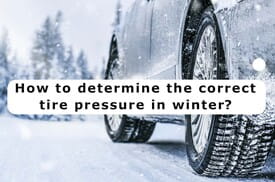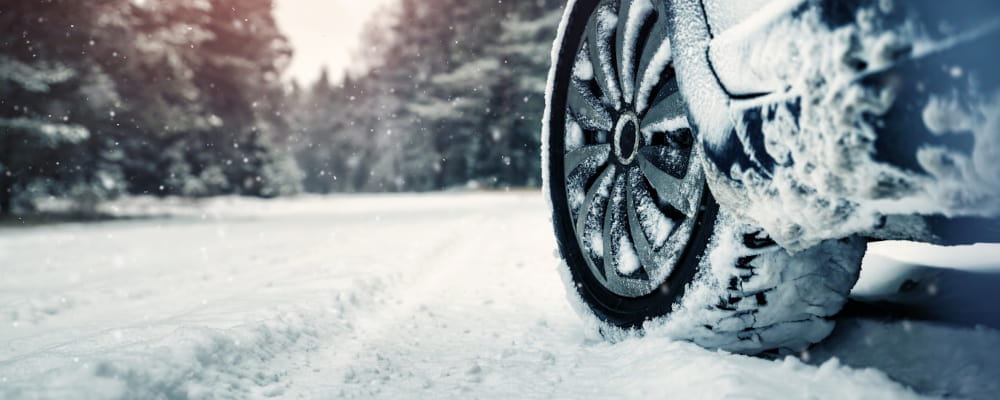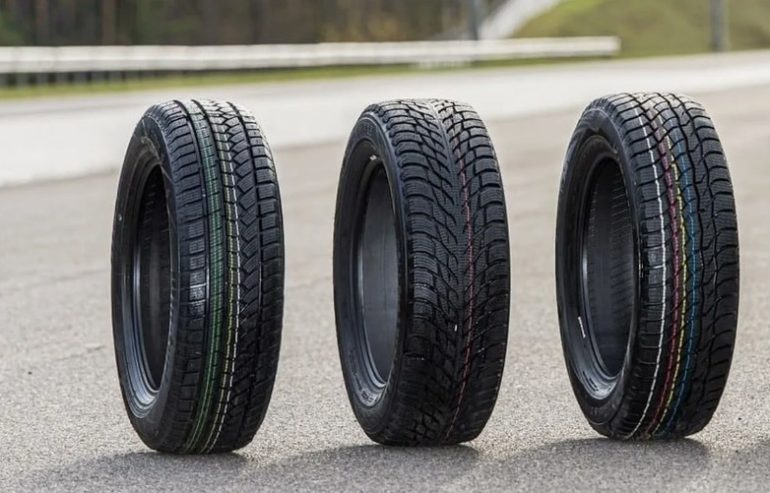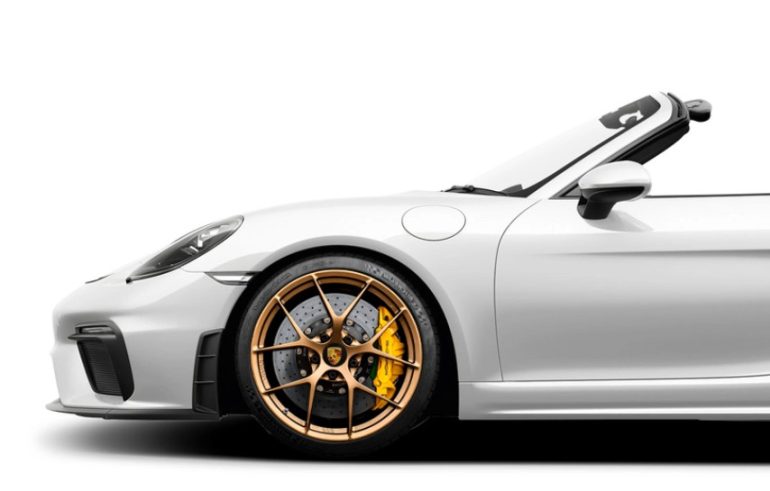How to determine the correct tire pressure in winter?

One of the parameters that significantly affect the behavior of a car on the road is tire pressure. It is especially important to know it and be able to measure it in winter. In this article, we will look at how the degree of inflation of a wheel affects its properties and car handling, and also describe how to measure tire pressure, how often this knowledge needs to be applied in practice, and what consequences ignorance can lead to.
Determining tire pressure
To determine the pressure in the tires, you need to get a car pressure gauge. This device can be analog and digital. The analog version is more reliable and less expensive, but it requires an additional power supply. Digital pressure gauges are more expensive, but they are more accurate and can run on batteries or rechargeable batteries.
Even if you do not know how to measure tire pressure, you can learn how to do it the first time. You just need to insert a special pressure gauge connector into the tire inflation hole for a couple of seconds. This is done so that the air in the tire is slightly lowered. After a couple of seconds of waiting on the analog device, the arrow will indicate the value of the current pressure. In a digital device, the result will be displayed on the screen.
Experienced motorists believe that they can determine tire pressure by eye, but in practice it is possible to visually assess the deviation of this parameter from the norm only when it exceeds 30%. A 10-15% under-pumping cannot be determined even by feeling the camera, not to mention the fact that it is visible to the naked eye. Narscars experts recommend measuring tire pressure at least 1-2 times a month and before every long trip.
Units
It is customary for domestic motorists to measure the degree of tire inflation in atmospheres or bars. 1 BAR is equal to 0.98ATM or kg/cm2. In the UK and the USA, a different measurement system is used, so they have this parameter measured in PSI — pounds per square inch. 1 psi is equal to 0.68 BAR. Some automakers use Kilopascals (kPa) to measure pressure. 1 such unit is equal to 6.8964PSI.
How and what does tire pressure affect?
Many drivers do not even know how to measure tire pressure, mistakenly believing that this is an unimportant parameter, without knowing which it is quite possible to do while driving a car. Meanwhile, wheel pressure has a serious impact on the following indicators:
- degree of fuel consumption;
- uniform wear of tires;
- vehicle maneuverability.
If the tire is properly inflated, it is in full contact with the road surface, so it wears evenly while riding. If there is little air in it, then contact with the road occurs only on the sides, and if there is a lot, then only in the central part. Any abnormal condition of the tires leads to the fact that the life of the wheels is reduced and there is a serious threat to the life of the driver and his passengers.
To understand how important it is to correctly inflate tires, consider how different degrees of inflation affect the ride and condition of the vehicle:
- The tire is 65% flat. The sagging is visible to the naked eye. It can be driven no more than a couple of kilometers, since the disc will catch on the tire and eventually damage it.
- The wheel is lowered by 25-60%. It will not be able to drive a lot on asphalt or other hard surfaces. When maneuvering sharply at high speed, there is a high risk that the tire will simply fly out of the rim. If the driver at the same time does not like to wear seat belts, then the trip for him may be unsafe. At the same time, it is easier to drive through viscous mud or an area with deep wet snow with a lowered tire. The main thing is that after you pass the off-road section, immediately pump up the tires to a normal state.
- Slightly lowered by 10-15% of the norm. Such under-pumping does not cause severe discomfort to the driver and does not cause accidents on the road. On the contrary, a car on lowered wheels quickly picks up speed after the start and rides smoothly, but at the same time its controllability decreases. Daily driving increases fuel consumption and tires wear out faster.
- Norm. When the tire pressure is correct, it is much easier for the driver to predict the behavior of his car. The tread is in close contact with the road surface, so the tire wears evenly and does not need to be changed frequently.
- Pumping by 10-15% of the norm. The car handles worse and rides harder. For studded tires, this is an advantage, since the studs protrude slightly on an overinflated tire and provide better contact with the road.
If the tire is not properly inflated, its surface does not fully contact the road surface, so the tread does not drain fluid well. This increases the risk of hydroplaning.
Optimum tire pressure
The degree of inflation of automobile wheels is influenced by several factors:
- temperature. As the temperature rises, the pressure rises. Each additional 8°C in the room add +/- 0.1 BAR;
- weight distribution along the axles. Due to the different weight distribution, the pressure in the front and rear wheels is different;
- vehicle load. The more people and luggage loaded into the car, the more air must be pumped into the tires to compensate for their weight;
- tire diameter.
To understand whether the pressure in your wheels is correct, it is enough to measure it with a pressure gauge and compare it with the parameters recommended by the automaker. A corresponding memo about the optimal values of this parameter is on the body of almost every car on the inside of the gas tank hatch. In some models, the memo is located on the driver’s door pillar. It indicates the optimal values of tire pressure for different diameters and with varying degrees of vehicle load.
To correctly determine tire pressure, it must be measured when the car has not been used for at least 2 hours. For «hot» tires, this figure will be 0.2-0.3 BAR higher.
Effect of temperature on tire pressure
If the degree of tire inflation is checked indoors in winter, then it should be taken into account that the difference in air temperature with the street in this case is on average 20 ° C. When the car drives onto the road after measurements, its wheels will immediately lose from 0.2 to 0.4 BAR. The ride will be softer, but it will take longer to accelerate and brake. For a comfortable ride, it is important to determine the correct tire pressure in winter.
In hot weather, you can not pump the wheels, because the temperature of the air increases the temperature of the wheel and increases the pressure in it. When driving fast in the heat, friction on hot asphalt also increases, and tire temperatures can reach even hundreds of degrees. Due to these factors, pressure is greatly increased, and even a small stone or bump that has fallen under the tire can cause it to burst.

The dependence of tire pressure in winter on their size
With the onset of cold weather, many motorists are looking for information on thematic Internet forums on how to determine the correct tire pressure in winter, taking into account their radius. In fact, the diameter of the tire only indirectly affects this parameter. If you study the manufacturer’s recommendations, for example, for Nissan Qashqai, then the pressure in the front wheels should be 2.3 BAR, while their radius is 16, 17 or 19, while the rear wheels should be 2.1 BAR for any radius. If the car is fully loaded, then the pressure in the rear wheels must be increased to 2.6 BAR.
Similar recommendations are given by the manufacturer Toyota Corolla. The wheels on both axles should have a pressure of 2.2 BAR with a radius of 15 and 16. If the load is maximum, then they need to be pumped up to 2.5 BAR. It can be concluded that the radius of the tires does not play a decisive role in determining the degree of their inflation.
Studded tire pressure on winter tires
To determine the correct tire pressure in winter, a special study was carried out. For him, they used a car with studded tires, which was first pumped up to the recommended value, then it was lowered to 1 BAR, and at the third measurement it was increased to 3 BAR. At the same time, with each pressure level, it was estimated how the car picks up speed from 5 to 28 km/h and what braking distance it will have on ice when the speed decreases from 28 to 5 km/h.
On flat tires, the car accelerated 10% longer, and its braking distance was 2 m longer. It turned out to be much better to ride on the pumped tires on ice, although the difference in comparison with the recommended pressure values is not significant. When pumping, the rubber contact patch decreased, but its spikes began to stick out more, providing better grip on an icy road. To move comfortably on a frost-bitten road, you need to know how to determine the correct tire pressure in winter and put this knowledge into practice.
Consequences of incorrect pressure in winter tires?
If a motorist does not know how to determine the correct tire pressure in winter, he can face many negative consequences of this ignorance. The most harmless of them, which «hits» only the driver’s pocket, is increased fuel consumption. Tires wear out faster due to improper inflation, which leads to the need to replace them quickly, which also means additional costs. But the most dangerous consequence of an incorrect level of tire pressure in winter is a decrease in vehicle controllability. Because of this, drifts occur on the frozen road and the likelihood of a car getting into an accident increases.
To make driving a car comfortable and safe in winter, it is enough to check the degree of tire inflation once every 2-4 weeks. It will only take a driver a few minutes to determine the tire pressure, but this simple and quick action will help save money on buying new tires, and most importantly, save you from an accident.
https://narscars.com.ua/blog/nuzhnoznat/kak-opredelit-pravilnoe-davlenie-v-shinah-zimoj

